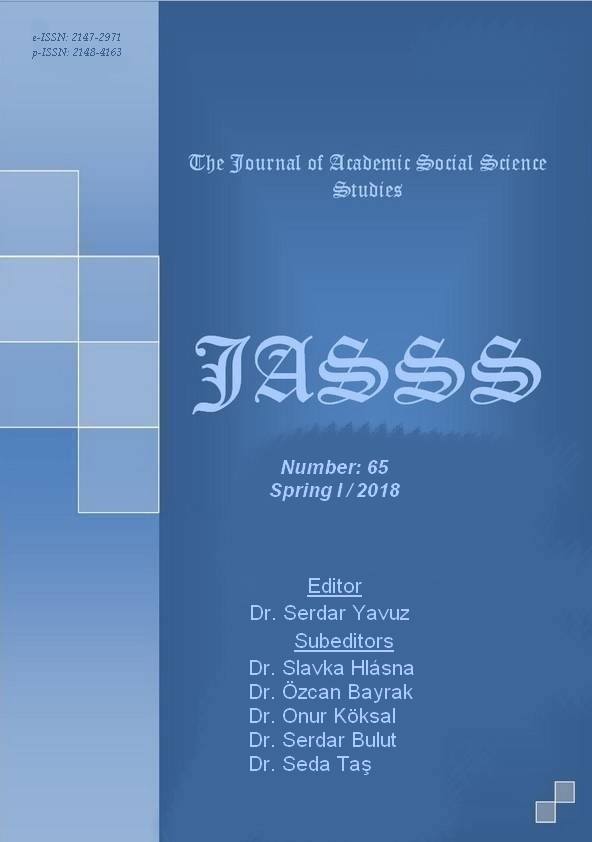Author :
Abstract
Kapitalizmin yeni bir yüzü olan Geç-kapitalizmle birlikte tüketim toplumu anlayışının baskın olduğu bir görüş olarak kabul edilen postmodernist dönemde, mikro-elektronik devrim sonucu üretim yapısının değişmesi, bilgi üretimi ve bilginin önemli bir güç kaynağına dönüşmesi günümüz sanat anlayışına zemin hazırlamıştır. Postmodern sanatçılar, modernist düşünce anlayışlarının, modernist tavırların tümünden ya da çoğundan uzak durmuşlardır. Sanat dünyasına düşünce bazında modernizmle ilişkisi kopmuş veya modernist üslupların tümünü içine alan farklı estetik anlayışlar ileri sürmüşlerdir. Postmodern teori ve sanat pratiğinin avangard strateji ve idealleri gerçekten yeniden ele geçirmeye çalışan bir tarzı vardır. Modernist estetiğin asıl özelliği orijinallik kültüdür. Sanat yapıtının mutlak, kendini temellendiren tekliğine, emsalsizliğine ve sahiciliğine duyulan inanç başattır. Bu bağlamda, modernliğin orijinallik/otantisite/biriciklik takıntısını postmodern düşünce anlayışı bozmaktadır. Çünkü postmodernlik, sanat tarihinin geri-dönüşümüne kapılmakta, avangard dahil bütün geleneği yağmalamaktadır. Bu bakımdan, geçmişteki her eserin alıntılanması, kopya edilmesi, taklit edilmesi ve bu sayede modern sanatın kalbi sayılan orijinallik/biriciklik ilkesinin tahrip edilip reddedilmesi postmodern sanatın stratejisi haline gelmektedir. Bu çerçevede, kendine mal etme, temellük ve temellük sanatının iç dinamikleri olarak eklektisizm, pastiş, simülasyon ve feminizm gibi postmodern stratejiler gelişmiş ve sahiplenme, ödünç alma, intihal ya da çalma modernistlerin özgünlüğe saygısını küçümseyen bir postmodernist strateji olarak günümüz sanatında yaygınlık kazanmıştır. Belli bir zaman sonra postmodernizm birden çok sanat türünü, üslubu, akımı çevreleyen daha genel bir kavram haline gelmiştir.
Keywords
Abstract
At the postmodernist period which is accepted as an idea which focuses on consumer society perception together with Late-capitalism – a new face of capitalism-, change in production structure as a result of micro-electronic revolution, transformation of information production and information into a power source formed a basis for today’s sense of art. Postmodern artists avoided all or most of the modernist thought, modernist attitudes. They proposed different sense of aesthetics to the world of art which finished its relation with modernism on the basis of thought and consists of all modernist genres. Postmodern theory and art practice have a style which really tries to re-capture avant-garde strategy and ideals. Main characteristics of modernist aesthetic is authenticity cult. Belief in absolute oneness and uniqueness of work of art which grounded itself is principal. Within this context, postmodern thought unsettles obsession of modernity to authenticity/originality/uniqueness. Because, postmodernity falls in recycling of art history and loots the whole tradition including avant-garde. In this regard, citing, copying, imitating every work from past, thus destroying originality/uniqueness principle which is the heart of modern art is the strategy of postmodern art. Within this framework, postmodern strategies such as eclecticism, pastiche, simulation and feminism which are as internal dynamics of appropriation, seizin and art of seizin developed and ownage, borrowing, plagiarism or stealing have become common in today’s art as a postmodernist strategy which underestimates the respect of modernists to originality. Hence, postmodernism become a more general concept surrounding many types of art, genre, movement.





